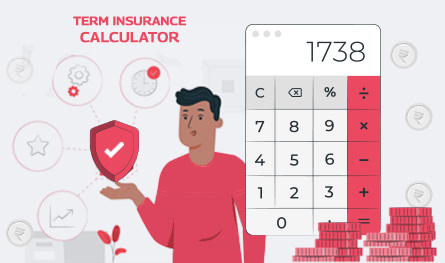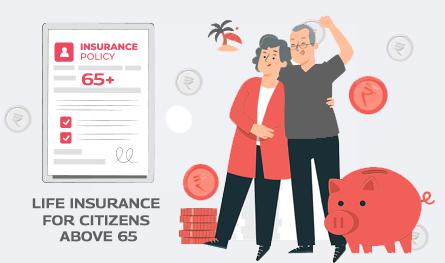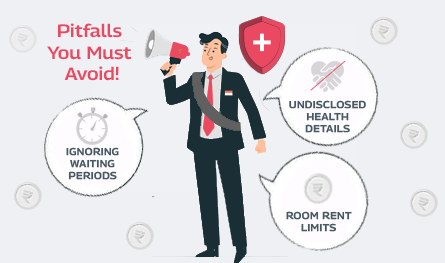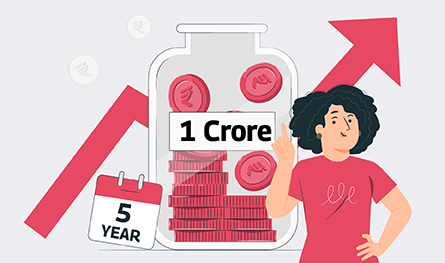How to save tax for salary above 10 Lakhs in India and pay zero tax?
.png)
Based on the income tax slab, every individual has to pay tax in India. However, there are measures that can be used to pay zero tax on salary. In this post, we will discuss how to save tax on 10 lakh income or above.
.png)
In India citizens are expected to pay tax as per the tax slab that they belong to. However, there are ways to get tax deductions to pay no tax or zero tax on your income by means of investment plans in various tax-saving instruments.
If you are looking for such ways to pay no tax on 10 lakh income and beyond, don’t miss out on optimization of salary. In this post, we are offering various tips on tax planning by means of salary optimization to guide you better. But before that let’s look at the income tax slabs under the new and old income tax regime.
Old Income Tax Regime vs. New Income Tax Regime (for tax slab):
Take a look at the new and old tax regimes for tax slabs so that you can choose the best one between the two. Here we are offering the various tax slabs under both the regimes for better understanding.
Income Tax Slabs for Individuals
| Yearly Income | Tax Slab As Per Old Tax Regime | Tax Slab As Per New Tax Regime |
| Up to INR 2.5 lakh | NIL | NIL |
| INR 2.5 lakh to INR 5 lakh | 5% | 5% |
| INR 5 lakh – INR 7.5 lakh | 20% + Rs. 12,500 | 10% + Rs.12,500 |
| INR 7.5 lakh – INR 10 lakh | 20% + Rs. 12,500 | 15% + Rs.37,500 |
| INR 10 lakh – INR 12.5 lakh | 30% + Rs 1,12,500 | 20% + Rs.75,000 |
| INR 12.5 lakh – INR 15 lakh | 30% + Rs 1,12,500 | 25% + Rs.1,25,000 |
| INR 15 lakh and above | 30% + Rs 1,12,500 | 30% + Rs.1,87,500 |
You may note here that the new tax regime does not provide any deductions. It is only the Old Tax Regime that allows deductions as discussed in the post below.
How to Save Tax for Salary above 10 lakhs?
If you want to know how to save tax on 10 lakh salary, you should first understand your Salary Structure to be able to save more. There are various grants and tax exemptions allowed under a salary. The taxable income is the amount of salary that doesn’t come under the purview of any exemptions.
Hence, your Salary minus Exemptions is equal to Taxable Salary Income. Similarly, Taxable Salary Income minus Deductions is equal to Net taxable income. Hence, tax savings can be capitalized on through various deductions and exemptions (available under the old tax regime).
Salary Exemptions Allowed under Income Tax
Various Salary Component that comes under Tax Exemptions include:
- Basic Salary
- Dearness Allowance
- HRA or House Rent Allowance
- LTA or Leave Travel Allowance
- Mobile/Internet Allowance
- Education allowance for Children
- Food Allowance
- Standard Deductions
- Professional Tax
Deductions that can be Availed on Income Tax on 10 lakh Salary
- On policy premium of your Health insurance (Under Section 80D)
- On loan for higher education (Under Section 80E)
- Charity Donations (Under Section 80G)
- Investments done in tools of tax saving (Under Section 80C)
- On disabled dependent treatment cost (Under Section 80DD)
- Deductions are available on home loan
- Also on the Life Insurance Policy maturity amount
Ways to Pay Zero Income Tax on 10 Lakh Salary and Above?
Let us understand income tax above 10 lakh with an example as follows:
| Salary (Gross) | INR 10, 00, 000 |
| Exemptions: (rough estimation) | |
| HRA | INR 1,50,000 |
| LTA | INR 40,000 |
| Reimbursements | INR 24,000 |
| Education (of children) | INR 9,600 |
| Standard Deductions | INR 50,000 |
| Professional Tax | INR 2,400 |
| Taxable Salary | INR 7,24,000 |
| Deductions: | |
| Under 80C | INR 1,50,000 |
| Under 80D | INR 50,000 |
| Under 80E | INR 25,000 |
| Income for Net Tax | INR 4,99,000 |
| Taxable Amount | INR 12, 450 |
| Rebate Under Section 87A | INR 12, 450 |
| Total Tax | 0 |
Also, you may be eligible for further deduction of claims for tax above 10 lakhs:
| Home loan deduction (Interest amount) Under section 24(b) | INR 2,00, 000 |
| Home loan under section 80EEA | INR 1,50, 000 |
| Savings in NPS Under section 80CCD(1B) | INR 50, 000 |
You may here note that it is not necessary for everyone to possess a home loan. Moreover, many people may not show interest in investments as well. However, these tax saving investments can be used to deduct INR 1, 50,000 from your salary under section 80C.
Save Tax For Salary Above 10 Lakh
To claim tax deductions u/s 80C, one can file income tax returns in March, which is the end of a financial year.
As per Income Tax Act, an income of INR 2.5 lakh is tax-free per year. However, for senior citizens of 80 years and above, INR 5 lakh is tax-free. And those within the age group of 60 and 79 years can enjoy tax exemption of INR 3 lakh.
No, as per Section 80C of Income Tax, INR 1.5 lakh is the highest amount that can be claimed for tax deduction regardless of how many investment policies you have. However, people belonging to Hindu Undivided Family (HUF) can avail benefits of INR 1.5 lakh under section 80C individually as well as INR 1.5 lakh benefit is allowed for the Hindu Undivided Family (as a unit).
Yes, saving 100 percent on tax is possible with the help of enough investments and planning of tax.
Yes, one can invest in post office schemes to save income tax u/s 80C of IT Act.

Author Bio
Paybima Team
Paybima is an Indian insurance aggregator on a mission to make insurance simple for people. Paybima is the Digital arm of the already established and trusted Mahindra Insurance Brokers Ltd., a reputed name in the insurance broking industry with 17 years of experience. Paybima promises you the easy-to-access online platform to buy insurance policies, and also extend their unrelented assistance with all your policy related queries and services.
Other Life Insurance Products
Latest Post
.png)
If you are planning to buy two-wheeler insurance and are seeking answers to some frequently asked questions, look no further. Read on to know the two wheeler insurance FAQs related to bike insurance policy in this post.


Let’s be honest – life insurance planning isn’t exactly someone’s weekend hobby. It is the financial equivalent of flossing: we understand its importance, but we tend to put it off. But somewhere between balancing work and life, you might realise you need to have a solid plan in place – just in case.


If you think of life insurance, chances are you are picturing something people buy in their 30s or 40s. But what if you are 65 or older and just getting started? The good news is that you are never too late. Whether you are thinking of easing the financial burden on your family, covering final expenses, or simply leaving behind a legacy, there are life insurance options tailored just for you.
This article will be a guide to life insurance for senior citizens above 65 years, explaining why it is important, the type of insurance options, and how to get the right policy for you.


Health insurance plans are purchased with the hope of medical protection in times of need. However, sometimes it ends up being a source of surprise and disappointment. This mostly happens when people rush to buy health insurance plans, often overlooking essential aspects. Ignoring waiting period clauses, misunderstanding exclusions, and being unaware of sub-limits can lead to unwanted problems in the future.


If you are looking at investment policies offering INR 1 Crore in 5 years, we talk about some excellent plans in this post to help you choose the best one and reach your goal. However, it is important not to get swayed. Doing proper research and taking advice from financial or insurance advisors is important. Learn about such investment plan in this post.




